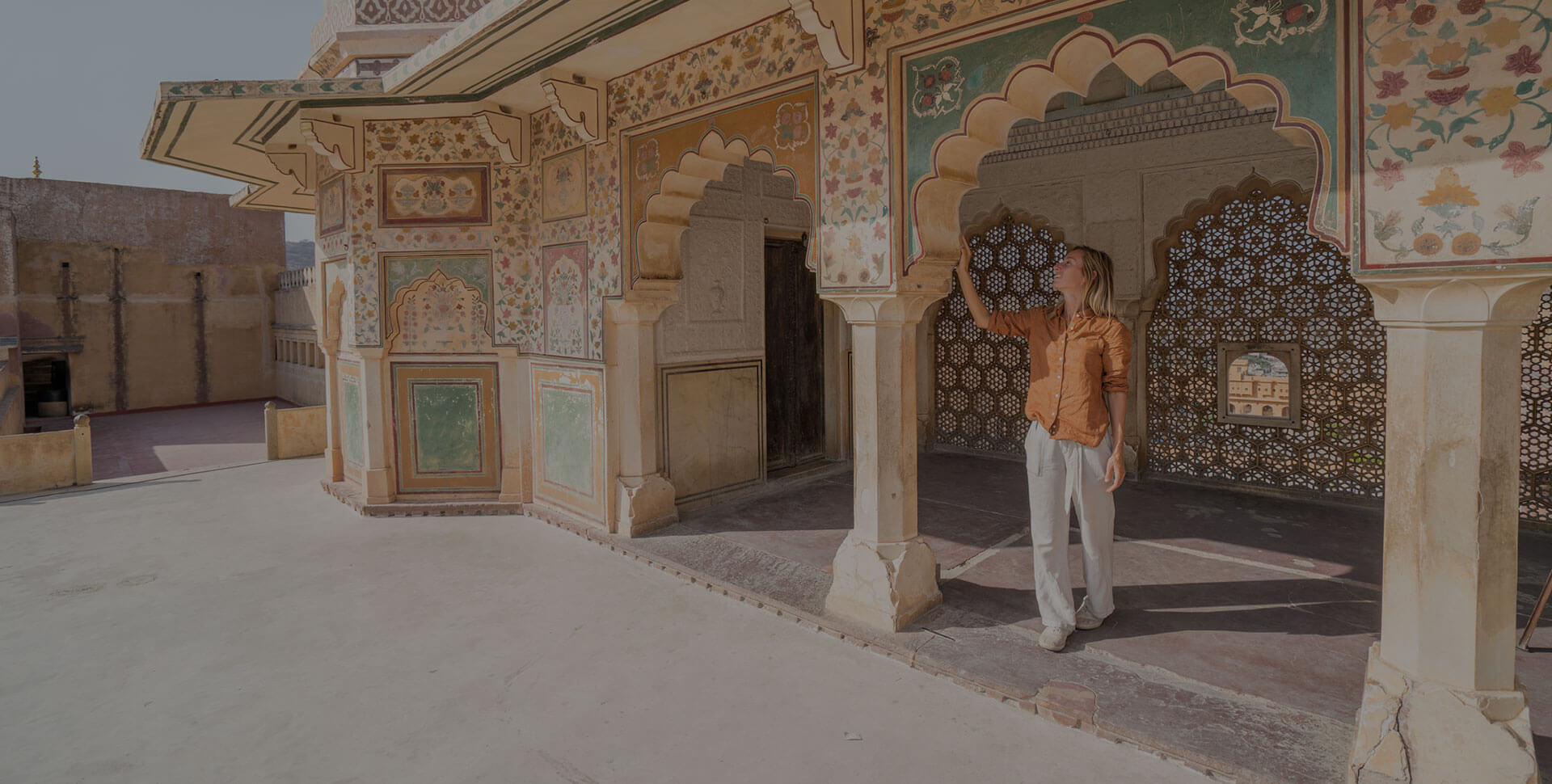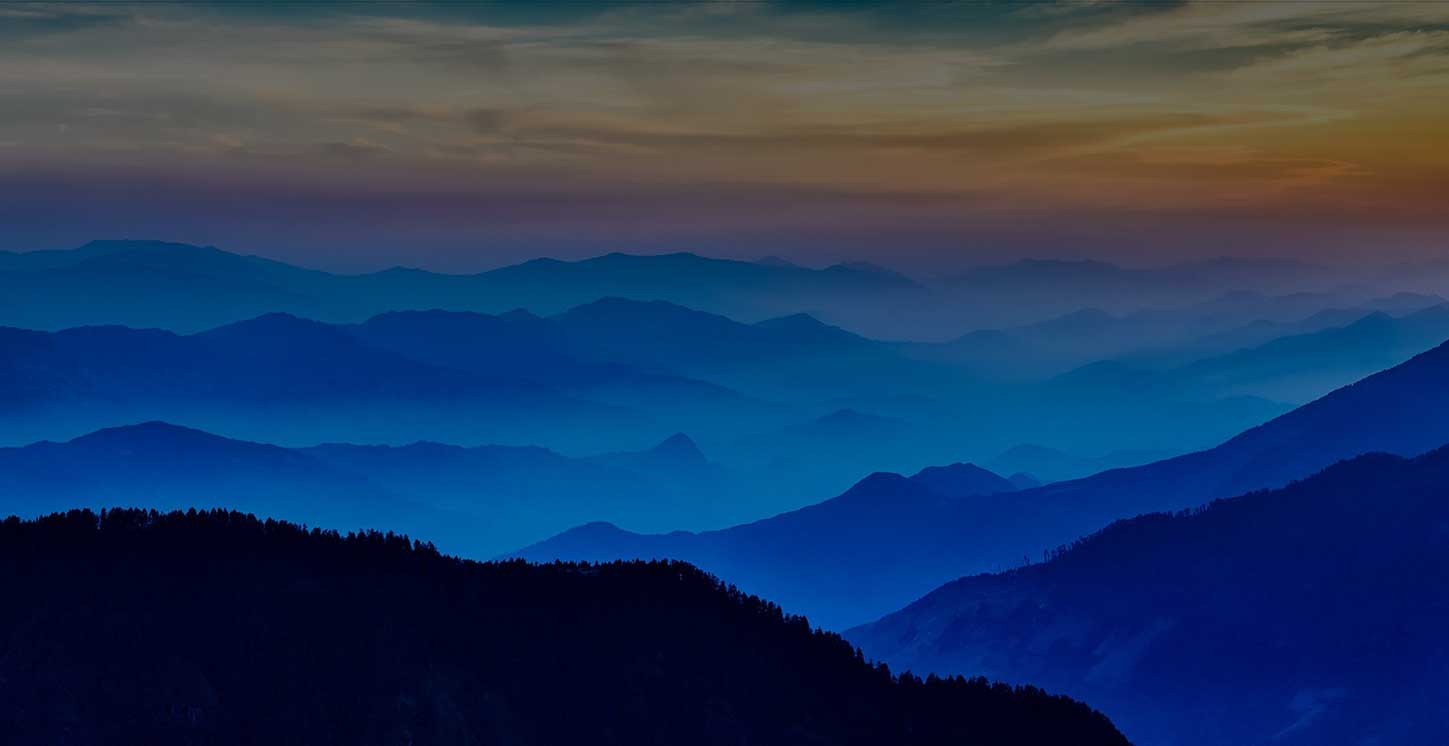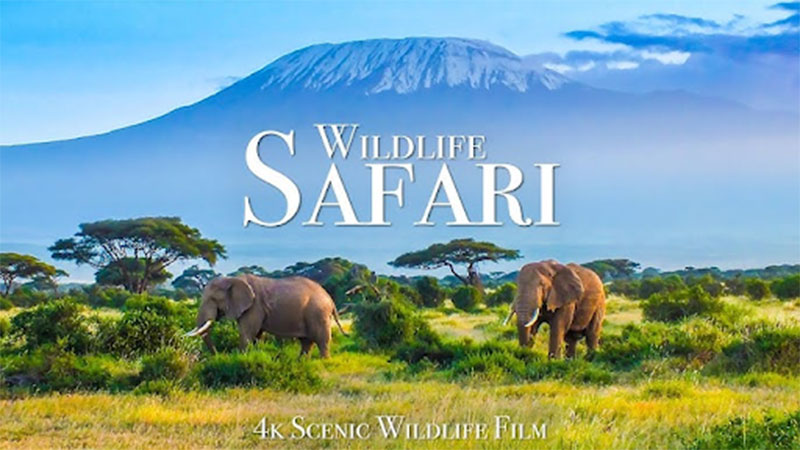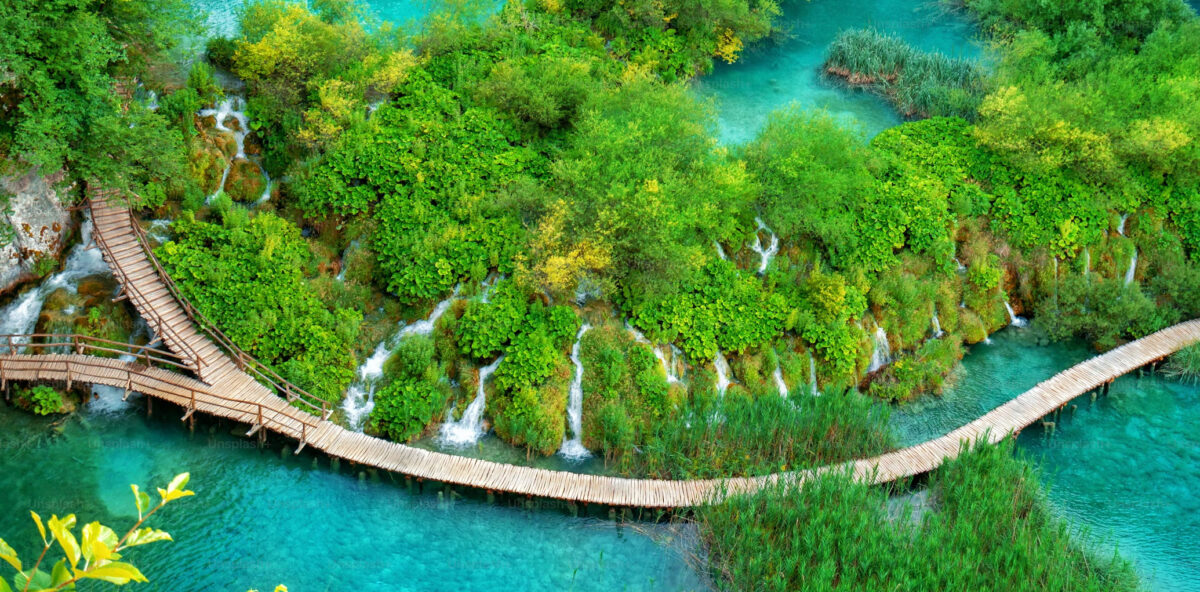Category: Travel
A Journey Through Rajasthan: The Land of Maharaja’s

Welcome to Rajasthan, the Land of Maharaja’s, where history whispers from every corner and culture vibrates in the air. Rajasthan, a jewel in India’s crown, stands as a testament to a glorious past of valor, grandeur, and artistic excellence. With its majestic forts, vibrant traditions, and rich heritage, it invites travelers on a journey through time.
The Magnificent Forts and Palaces:
Rajasthan is renowned for its majestic forts, opulent palaces, and intricate havelis, each a testament to the state’s rich history and architectural grandeur. Here are some of the most notable examples:
1. Amber Fort, Jaipur: A stunning fort known for its artistic Hindu-style elements, including large ramparts, gates, and cobbled paths. The fort overlooks Maota Lake and is a UNESCO World Heritage Site.
2. City Palace, Udaipur: A sprawling palace complex situated on the banks of Lake Pichola. It showcases a blend of Rajasthani and Mughal architectural styles and offers panoramic views of the city.
3. Mehrangarh Fort, Jodhpur: One of the largest forts in India, known for its imposing walls and intricately decorated palaces within, such as the Moti Mahal (Pearl Palace) and Phool Mahal (Flower Palace).
4. Umaid Bhawan Palace, Jodhpur: A magnificent palace that serves as a hotel, museum, and royal residence. It is one of the world’s largest private residences.
5. Jaisalmer Fort, Jaisalmer: Also known as Sonar Quila (Golden Fort), this living fort is home to many shops, hotels, and ancient havelis, with intricate carvings and designs.
6. Junagarh Fort, Bikaner: A fort that has never been conquered, it houses beautiful palaces like Anup Mahal, Chandra Mahal, and Phool Mahal.
7. Karni Mata Temple, Bikaner: Known as the Rat Temple, it is famed for its large population of rats considered sacred.
8. City Palace, Jaipur: A royal residence complex that includes Chandra Mahal and Mubarak Mahal, showcasing a mix of Rajput, Mughal, and European architectural styles.
9. Hawa Mahal, Jaipur: Also known as the Palace of Winds, it features a unique five-story facade with 953 small windows, allowing royal ladies to observe street festivals without being seen.
10. Patwon Ki Haveli, Jaisalmer: A cluster of five havelis, it is renowned for its elaborate carvings and mirror work.
11. Samode Palace, near Jaipur: A heritage palace hotel known for its stunning frescoes and elegant architecture.
Art and Craft of Rajasthan

Rajasthan is renowned for its traditional arts and crafts, which include:
1. Pottery: Blue pottery of Jaipur is famous for its intricate designs and vibrant colours.
2. Textiles: Bandhani (tie-dye) and block printing are traditional textile arts of Rajasthan.
3. Jewellery: Rajasthan is known for its exquisite silver and gold jewellery, including Kundan and Meenakari work.
4. Puppetry (Kathputlis): Puppetry, locally known as Kathputlis, is a traditional form of folk entertainment in Rajasthan. These handcrafted wooden puppets are used to narrate stories from Indian folklore and mythology, accompanied by music and dialogues. The puppeteers, called Bhats, are skilled storytellers who use these vibrant puppets to bring stories to life.
Iconic Dishes
1. Dal Baati Churma: A quintessential Rajasthani dish, Dal Baati Churma is a combination of lentils, baked wheat balls, and a sweet crumble. It’s a must-try for anyone visiting Rajasthan.
2. Laal Maas: Laal Maas, a fiery meat curry made with red chillies and yogurt, is a favourite among spice lovers. Its rich, robust flavours make it a standout dish in Rajasthani cuisine.
Wildlife and Nature – National Parks and Wildlife Sanctuaries

Rajasthan is home to several national parks and wildlife sanctuaries, offering a haven for a variety of wildlife species. Some of the prominent ones include:
1. Ranthambore National Park: Ranthambore National Park, located in the Sawai Madhopur district of Rajasthan, is one of the most renowned national parks in India, particularly famous for its population of Bengal tigers. Spanning an area of approximately 1,334 square kilometers, the park features a mix of dry deciduous forests, grasslands, and ancient ruins, creating a picturesque setting for wildlife viewing. A safari through Ranthambore allows visitors to spot tigers, often seen in the park’s open grasslands and near its many lakes. In addition to tigers, the park is home to various other wildlife, including leopards, deer, sloth bears, and a wide range of bird species. The park’s rich biodiversity and historical significance, including the 10th-century Ranthambore Fort, make it a popular destination for wildlife enthusiasts and history buffs alike.
2. Keoladeo National Park: A UNESCO World Heritage site, Keoladeo National Park is a haven for bird watchers. It hosts thousands of birds, especially during the winter season, making it a paradise for ornithologists.
3. Sariska Tiger Reserve: Located in the Alwar district, Sariska Tiger Reserve is a renowned wildlife sanctuary that spans over an area of approximately 881 square kilometers. Originally a hunting preserve, it was declared a wildlife reserve in 1955 and later became a tiger reserve under Project Tiger in 1978. The reserve is home to Bengal tigers, leopards, hyenas, and a diverse range of bird species. It features a mix of dry deciduous forests, grasslands, and rocky terrain, offering a rich habitat for wildlife.
4. Jhalana Leopard Reserve, Jaipur: Situated on the outskirts of Jaipur, Jhalana Leopard Reserve is a unique urban wildlife reserve known for its thriving leopard population. Spread over an area of around 23 square kilometers, it offers a rare opportunity to witness these elusive big cats in proximity to a bustling city. In addition to leopards, the reserve is home to various other wildlife, including striped hyenas, Indian foxes, and a variety of birds. The reserve’s dense forests and rocky hills provide an ideal habitat for leopards, making it a popular destination for wildlife enthusiasts.
5. Jawai Leopard Reserve, Jawai Bandh Pali: Jawai Leopard Reserve, located in the Pali district, is famous for its harmonious coexistence of leopards and local communities. The reserve, surrounding the Jawai Dam, is characterized by its rocky hills and granite formations, which provide perfect natural shelters for leopards. Unlike other reserves, the leopards of Jawai are known for their visibility, often seen lounging on rocks during the day. This unique landscape supports a diverse range of wildlife, including crocodiles, birds, and other mammals. The region’s cultural and natural beauty attracts many tourists.
6. Desert National Park, Jaisalmer: Desert National Park, located near Jaisalmer, is one of the largest national parks in India, covering an area of about 3,162 square kilometers. It showcases the unique flora and fauna of the Thar Desert, including the endangered Great Indian Bustard, a bird species that is a significant highlight of the park. The park’s landscape is characterized by sand dunes, rocky outcrops, and sparse vegetation, providing a habitat for a variety of desert wildlife. The park also hosts species like foxes, desert cats, and reptiles, making it a unique ecosystem that reflects the harsh yet beautiful environment of the desert.
Rajasthan’s Cultural Festivals
Rajasthan is a land of vibrant festivals that celebrate its rich culture and traditions. Some of the major festivals include:
1. Pushkar Festival: Held annually in Pushkar, this is one of the largest camel fairs in the world, featuring livestock trading, cultural performances, and competitions.
2. Camel Festival: Held in Bikaner, this festival celebrates the ship of the desert with camel races, dance performances, and traditional music.
3. Kite Festival: Celebrated across Rajasthan, particularly in Jaipur, the Kite Festival marks Makar Sankranti. The sky is filled with colorful kites as people compete to cut each other’s kites.
4. Jaipur Literature Festival: A renowned literary festival held in Jaipur, attracting authors, thinkers, and book lovers from around the world for discussions and cultural events.
5. Nagaur Festival: Held in Nagaur, this festival is known for its cattle fair, traditional sports, and cultural performances.
Desert Landscapes

1. Thar Desert: The Thar Desert, also known as the Great Indian Desert, is an expansive arid region that offers a unique landscape of sand dunes and sparse vegetation. Camel safaris are a popular way to explore this vast desert.
2. Sand Dunes of Sam: Located near Jaisalmer, the Sand Dunes of Sam are famous for their picturesque views and cultural performances. A night under the starry desert sky, with traditional music and dance, is an unforgettable experience.
Travel Tips for Rajasthan
Planning a trip to Rajasthan? Here are some tips to help you make the most of your visit:
1. Best Time to Visit: The ideal time to visit Rajasthan is between October and March when the weather is pleasant.
2. Travel and Accommodation: Rajasthan has a well-developed tourism infrastructure, with a range of accommodation options from luxury hotels to budget-friendly stays.
A journey through Rajasthan is like walking through a living museum, where each city tells a story of bravery, romance, and artistry. From the grandeur of its forts and palaces to the vibrancy of its culture and the richness of its cuisine, Rajasthan offers an experience that is both enriching and unforgettable. The Land of Kings awaits you with open arms, ready to share its timeless tales and captivating charm.
Indus Discoveries has been researching, developing, and organizing small group tours to unique destinations in India, Nepal, and Bhutan for the past 24 years.
If you want to discover iconic Rajasthan please contact us at: enquiries@indusdiscoveries.com
Traveling to India from USA? You need to know all this.

India is a land of diversity and mythical fables, beyond the realm of fabrication. For centuries she has lured millions of travelers that have been caught off guard by her alluring beauty, and have returned to their lands with wondrous memories. Hold on though. You just can’t pack your bags and hop onto the next flight to India. To all fellow Americans who are looking forward to traveling to India, here are some tips to help you glide through.
Get your e-Visa and travel insurance in order

American citizens with valid US passports that want to travel to India for a holiday only need to apply online for an e-visa, which will allow them a swift entry into the country. Visit the Indian Government’s website for e-travel authorization and other additional entry and exit requirements https://indianvisaonline.gov.in/. Also ensure to arrange comprehensive Travel Insurance(list of companies as suggested by the Department of State, United States of America) to cover the entire trip before departure.
How to overcome the dreaded jet lag!
The air travel shortest distance between India and United States is 8,448 miles. So of course when you arrive in India, your body clock will have a challenging time.
- Opt for an overnight flight – common sense. Avoid alcohol, caffeine and overeating a few hours before and during your flight and try to get as much sleep as possible.
- Set your watch to India’s local time as soon as you board your flight. And dive right into the local time when you arrive – that’s the only way to quickly retrain your internal clock.
- Spend the daytime outside as the sunlight will encourage the body to reset its clock. If you are exhausted and need a snooze, limit your nap to 30 mins. Anything more than that will disrupt your night sleep.
Some basic precautionary health measures before traveling to India

India offers a diverse range of climates, landscapes, and cuisines. Travelers from the USA do need to be slightly cautious when it comes to water and food, especially if they are traveling in the off-beat destinations of the country.
- Carry mosquito repellant with you and slather it on. Try to wear loose cotton clothing that covers your arms and legs.
- Always wear sunscreen whether it’s sunny or cloudy. The Indian sun is gorgeous and you may be very tempted to get an enviable tan, but do wear a sunhat during the day if it’s sunny.
- Only drink packaged or bottled mineral water and eat fresh, thoroughly cooked food. As delicious as they may seem, avoid street food unless recommended by a trusted local. When you arrive in India, stick to light cooked food, and slowly start indulging in the famed Indian fare. Give your tummy a couple of days to get used to the mouth watering flavors!
- Don’t travel without health insurance!
- Carry some basic medicines like an antihistamine, antiseptic, anti-diarrheal and paracetomal.
India’s diverse climates

India’s landscape ranges from the Himalayas in the north to the Indian Ocean in the south. For each season of the year, you will find ideal places to visit to India. Indian summers are notorious, but only for north-central and south India. India’s northern mountains like Kashmir, Ladakh, Himachal Pradesh and north east India are sublime at this time of the year. Read here for the best summer destinations in India. Some advantages of traveling to India in the summer are that you will avoid the touristy crowds of the peak season, and avail cheaper accommodation and transport prices.
Winter, autumn and spring are the peak travel seasons in India. From October till April, high season rates apply across hotels. The Himalayan regions get pretty cold in the winter, although snow lovers can enjoy the ski resorts in Kashmir and Himachal Pradesh. Ladakh is inaccessible during these months. Most regions in India enjoy a pleasant climate, making traveling a delight. Top places to visit in winter in India include Goa, Kerala, the coastline of eastern India, Rajasthan, Agra, Delhi etc.
Safety concerns while traveling to India
India has been in the news recently for women’s safety. Solo female travelers are becoming more commonplace, yet one must remain cautious and exercise basic safety measures. Here are some safety tips for travelers in India.
- For first time travelers, the labyrinth of hotel and transportation options can be confusing. It’s best to use the services of a local tour operator in India that has expert local know-how and provides certified and vetted tour guides, drivers, transporters etc.
- It’s advised to choose hotels in the city centre.
- If you need to venture out after hours, have your travel partner or a trusted local accompany you.
- Always use drivers that have been vetted by a travel agency.
- If you choose to use public transport, try to travel during the daytime. However Volvo or premium service buses that travel overnight are quite safe
- If you are traveling by train, ask your agent to book you in the first class compartment. It will be pretty cheap for you. Train stations sell chained locks, which are useful to secure your luggage to your seats.
- Political strife may exist in certain regions such as Kashmir, so use a travel agent to get updated information on the destination.
Transportation

Most cities in India are well-connected through flights and trains. In fact the country has an expansive road, rail and air network. You can also hire private cars with chauffeurs for more comfortable travel. Fleets of luxury buses are run by every state authority. Cab/taxi booking apps such as Uber and Ola in the major cities are reliable, cheap and quick.
Internet and Telephone
3G and 4G internet are readily available in most of the developed cities across the country. However, if you are traveling to offbeat or remote places or villages, you may have internet connectivity problems. Once you land in India, you can purchase prepaid SIM cards for cheap and use them for local and international phone calls. Again, phone connectivity is widespread, but may be an issue in very remote or mountainous areas.
Important Contacts for USA travelers
American nationals touring India should make a note of the contact details of the Embassy and Consulate. Most of the numbers you may need can be found at https://travel.state.gov/content/passports/en/country/india.html
English to Hindi key phrases

India with its 1.2 billion people has more than 22 dialects spoken in various parts of the country. Hindi is the most common of all languages in North India, and basic English words are also understood by transporters and locals. Southern India does not speak Hindi, but are well-versed in English. You can master a few basic words and phrases in Hindi for ease of communication.
Few Common Terms
| English | Hindi |
| Hello | Namaste |
| Goodbye | Alvida |
| Thank You | Dhanyawad |
| Yes | Haan |
| No | Nahi |
| Good | Bariha |
| Bad | Kharab |
| To Eat | Khana |
| To Drink | Pina |
| Water | Pani |
| My Name is … | Mera Naam … Hein |
| I am from USA | Mein USA Se Hoon |
| How Are You? | Kese Hein Aap? |
| What Is Your Name? | Apka Kya Naam Hein? |
| I am Sorry | Maaf Kijiye |
| Can you help me please? | Kya Aap Meri Madad Kar Sakte Hein? |
| How much is it? | Yeh Kitne Ka Hein? |
| Railway Station | Railway Station |
| Airport | Hawai Adda |
For Americans who have never been to this side of the globe, India can be confounding and overwhelming, yet will turn out to be the most wondrous experience of your life. It is advised to book and plan your vacation through an agent or better yet a local tour operator, who will take care of most of these procedures for you, while you can just sit back, relax and enjoy a hassle-free vacation.





 +1-(765)-586-1210
+1-(765)-586-1210 +44-2030-2689-44
+44-2030-2689-44 +91 124 4361906
+91 124 4361906






 +1-(765)-586-1210
+1-(765)-586-1210 +44-2030-2689-44
+44-2030-2689-44

